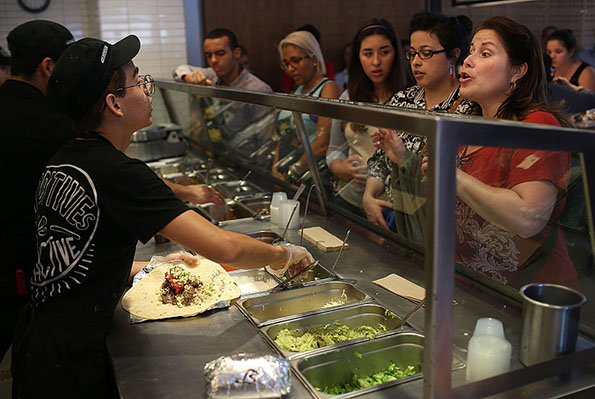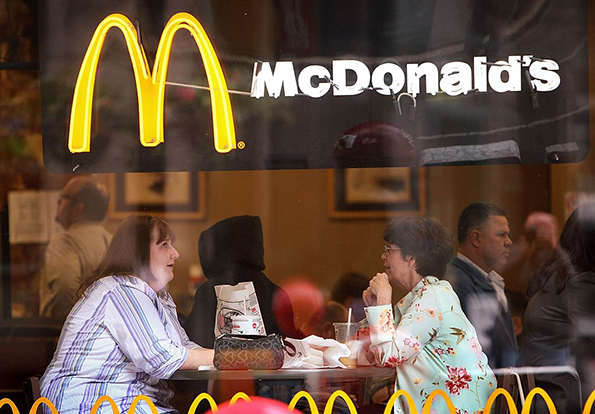As 2016 begins, the restaurant industry seems perpetually stuck in neutral.
Despite a host of tailwinds, like low gas prices, nearly full employment and low inflation, restaurant prognosticators largely point to little in the way of traffic growth this year. Just like last year. And the year before that. And the year before that.
Sure, your restaurant can generate traffic. But that traffic will have to come from somewhere else, making the customer-generation process that much more difficult. Oh, and all sorts of competitors are jockeying to steal your traffic, too, so you’d better keep up with the times.
“There were 61 billion visits to restaurants last year,” said Bonnie Riggs, restaurant industry analyst for the NPD Group. “How many more visits can we make?”
NPD Group is expecting 1-percent traffic growth this year, according to its annual forecast. “There are pockets of opportunity, and pockets of growth, but overall it’s still a battle for market share,” Riggs said.
Riggs noted that this is roughly on par with NPD’s projected traffic growth through 2022. In other words: This is the environment we can expect for the next several years.
Many other elements could also stand in the way of industry growth in 2016. While low oil prices have made gas prices lower than they’ve been in many years, they’re so bad that the economy is struggling in some southern states, hurting traffic there.

In addition, this is an election year, which brings with it uncertainty.
“I’m not expecting as robust a year” as 2015, said Larry Miller, co-founder of the MillerPulse survey.
According to Black Box Intelligence, same-store sales last year rose 1.6 percent, a 1-percent jump from the previous year’s growth rate. But the index also weakened as the year went on and “crawled to the finish” with 0.4-percent growth in the fourth quarter — setting the industry up for a potentially difficult year.
Joel Naroff, president of Naroff Economic Advisors and the economist for TDn2K, the company that publishes Black Box, said in a statement that “holes” in the economic expansion related to energy prices and the strong dollar led to regional weakness and softness in manufacturing.
Indeed, the tailwinds in the industry may actually work against improving traffic this year. Fitch Ratings expects 3-percent same-store sales growth this year, as consumers buy higher priced items and companies raise prices.
“Few catalysts exist for a meaningful increase in traffic,” Fitch wrote. Near normal employment and a bottoming out of gas prices means there’s no other improvements on the horizon that might prompt people to dine out more often this year.
All of this suggests is that the restaurant industry is as competitive as it’s been, and that getting customers in the door will be more challenging than ever in 2016. Indeed, restaurants aren’t just competing with other restaurants anymore. Convenience stores and grocery stores that serve prepared food items continue to take share.
“Convenience stores have upped their ability to offer foodservice items comparable to fast food and in some cases better than that,” said Tim Powell, food and beverage practice leader with the consulting firm Q1Consulting, based in Chicago.
The intense competition for so-called “share of stomach” means that companies have to give consumers what they want or expect to generate traffic and sales. Those that don’t adapt will lose share.
Operators that can succeed in taking share will have certain characteristics. They’ll most likely have limited service. If they have full service they’ll have something about their model that makes it more entertaining. They will also more likely have unique and preferably healthy menus. Either they’ll have a reputation for quality or low prices.
Fitch Ratings suggests that quick-service ratings will continue to take share from casual-dining restaurants.
NPD, meanwhile, predicts that all of the traffic growth in the restaurant industry this year will come from quick-service restaurants. Casual dining will actually have flat traffic, while midscale restaurants — or family dining — will see a decline of 1 percent.
Flat traffic would actually be an improvement for casual dining. “Casual dining has been in trouble for a long time,” Powell said. He expects older consumers will shift from casual dining to either lower-cost items or higher-end restaurants.
“You have to be different,” he added. “You can’t be like everyone else.”
So traditional bar-and-grill casual dining that thrived in the 1990s and early 2000s will likely continue to decline and cede share to chains that offer something different. Brewpubs, Riggs noted, will continue to grow in size by taking advantage of demand for beer.
So-called polished-casual concepts likewise will generate share. Chains like Buffalo Wild Wings that have established more entertaining options are likewise improving.
Consumers, especially younger consumers, “like to go to places that are new and different, an experience to be had,” Riggs said. “That’s what consumers are looking for. It’s become a form of entertainment.”
For basic needs, quick-service restaurants have become increasingly important to consumers.
That movement has been happening for years. Limited-service restaurants have come all the way back from post-recessionary weakness. Riggs said that quick-service traffic is now at pre-recessionary levels. “We’re choosing lower price options to satisfy our needs,” Riggs said.
Shifts in limited service
Even within the limited service sector, however, there is a shift in market share.
Fast casual chains have taken much of that market share in recent years, and grew by 8 percent in 2015, according to NPD. Experts expect that to continue in 2016.
That would happen in spite of issues at some of the country’s biggest fast-casual chains. Sales growth has slowed at chains like Noodles & Company and Panera Bread. And Chipotle Mexican Grill saw same-store sales decline 30 percent in December after a series of food safety scares. The chain’s same-store sales are expected to decline throughout the year, but the decline will likely narrow.
The broader fast-casual category remains in fast-growth mode. Investors continue pumping funds into high-potential chains, particularly with unique or healthy menus or business models.
Consumers “are willing to pay the price if you deliver on their expectations,” Riggs said. “For fast-casual, it’s quality, fresh ingredients, freshly prepared and in their mind it’s reasonable and affordable. Is everybody in fast casual growing great? No. But there is a lot of real demand out there.”
Traditional quick-service chains have been competing intensely recently, and early in 2016 they have engaged in a war for traffic, using low prices as a carrot to get people coming into the door.

Traffic generation has been a major issue in recent years for traditional quick-service chains. McDonald’s saw a 3-percent traffic decline in 2015, on top of a 4.1-percent decline last year, despite a strong fourth quarter. Other chains have seen growth stagnant in recent years.
As such, McDonald’s, Wendy’s, Burger King and now Hardee’s and Carl’s Jr. are all offering various low-priced meals. Meanwhile, Arby’s added new slider sandwiches to compete in the low-price category. And Steak ‘n Shake — which has generated sales growth for years based on its low-priced strategy — vowed this month not to raise prices this year.
To be sure, it’s much easier for these companies to offer discounts. Commodity costs are expected to be easy this year — including beef. That will be the first time in years when food costs ease at the same time that sales are expected to increase.
That could set up to be a profitable year this year. Fitch expects that margins could expand due to low commodity inflation as well as cost reductions that many companies have been making.
Labor costs have been widely expected to be problematic for companies in large part because of rising minimum wages coupled with labor demand. Fourteen states increased their minimum wages in January. California’s higher minimum wage is expected to cost Del Taco Restaurants Inc. $7.2 million in additional labor costs.
McDonald’s Corp., which operates about 1,300 of its 14,000 domestic locations, noted that higher minimum wages and its own decision to increase wages hurt margins in the U.S. by about 350 basis points.
Still, these concerns aren’t keeping companies from building and adding employees. Franchise businesses added 376,000 jobs last year — and franchise restaurants added 215,000 jobs — outpacing the growth rate for the economy as a whole, according to the human resources firm ADP.
The International Franchise Association expects that growth to continue. It expects the number of franchise businesses to grow by 13,359, or 1.7 percent, to 795,932.
And yet, some wonder, maybe that expansion has been too aggressive. Maybe the weak traffic many chains have experienced is due to the fact that the industry still has too many restaurants for the amount of demand.
Perhaps one reason why companies aren’t showing the traffic growth they expect, given all of these tailwinds, is capacity.
Andy Barish, analyst with Jefferies, said in a note that restaurants are getting increased consumer spending from the improved economy, but, he said, “it is being spread over too many restaurants which have been opened in the last several years.”
Contact Jonathan Maze at [email protected]
Follow him on Twitter: @jonathanmaze





